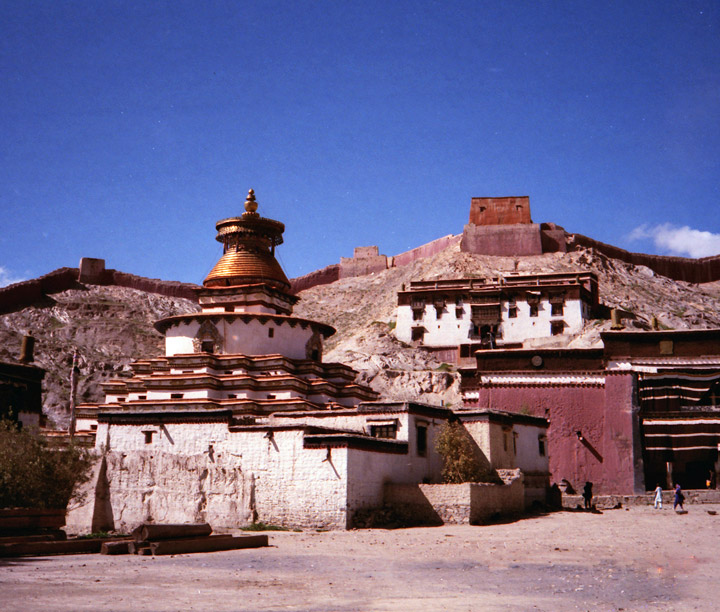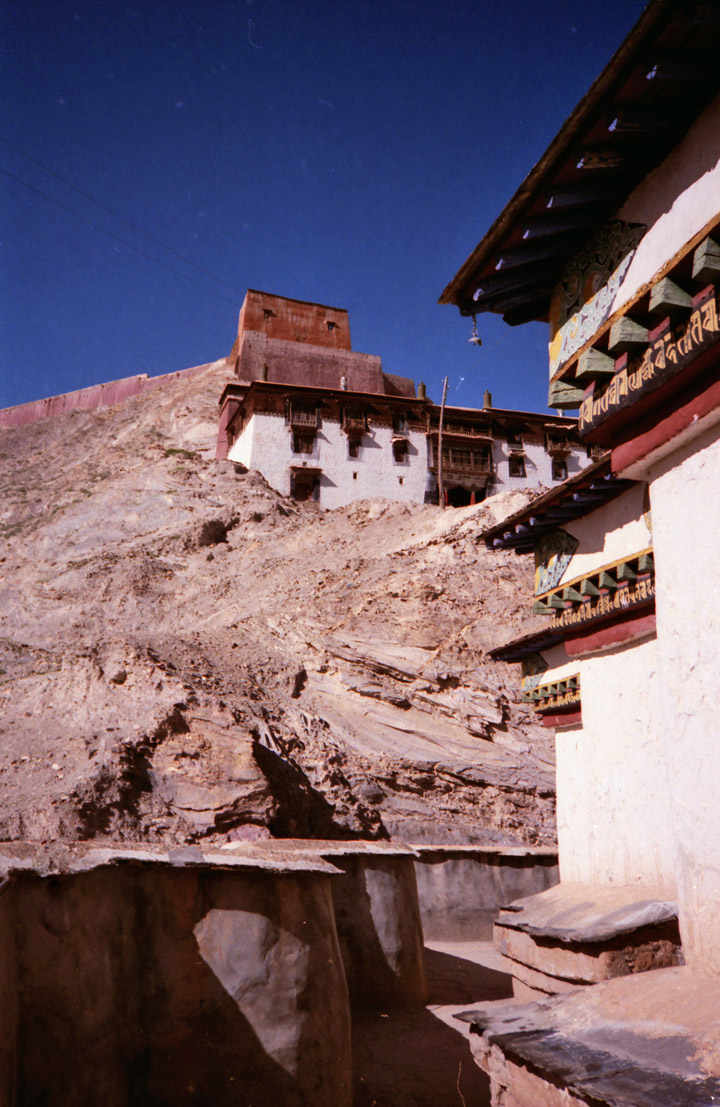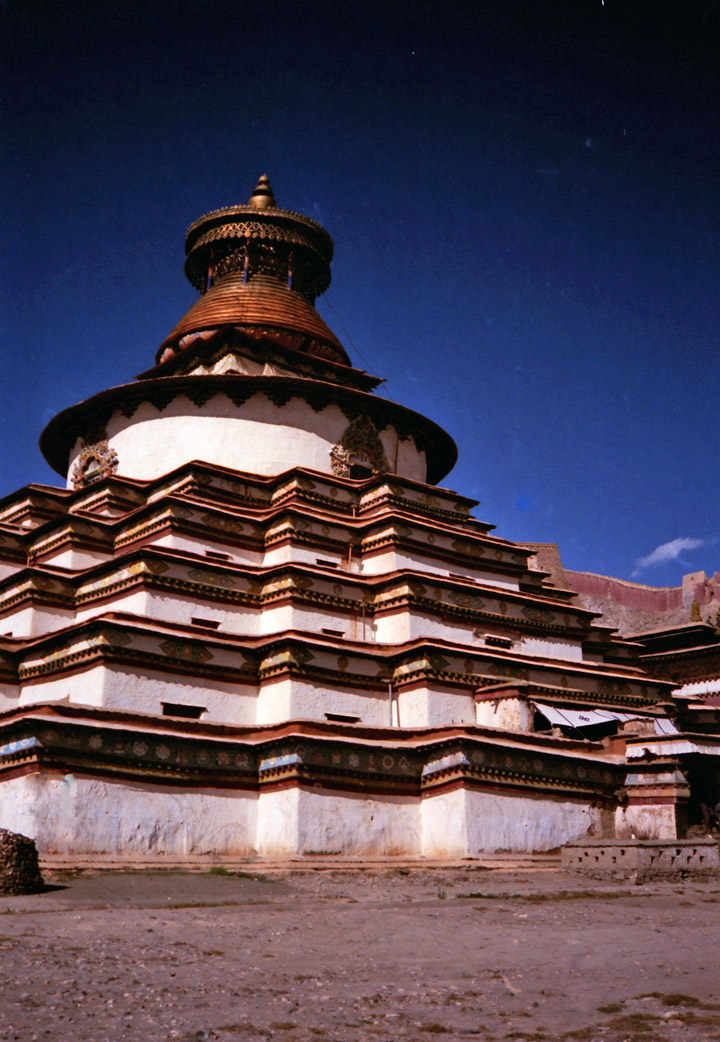

Xigatse
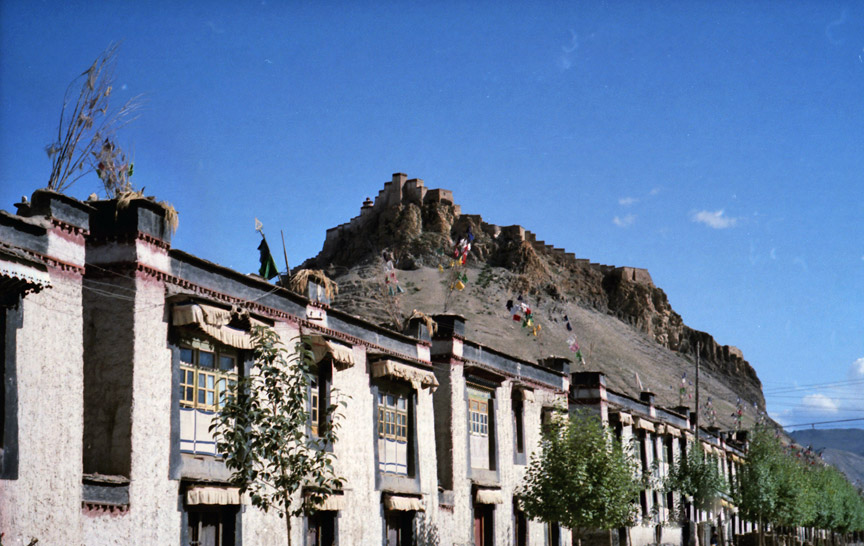
Shigatse or Rikaze (official spelling: Xigazê; other spellings: Rìkāzé (Rikaze), Shigatse, Shikatse, Zhigatsey traditional Chinese: 日喀則; simplified Chinese: 日喀则), Tibetan: གཞིས་ཀ་རྩེ་, is a county-level city and the second largest city in Tibet Autonomous Region, People's Republic of China, with a population of 80,000 about 250 km southwest of Lhasa. It is the administrative centre of modern Xigazê County in the Xigazê Prefecture, a region of Tibet.
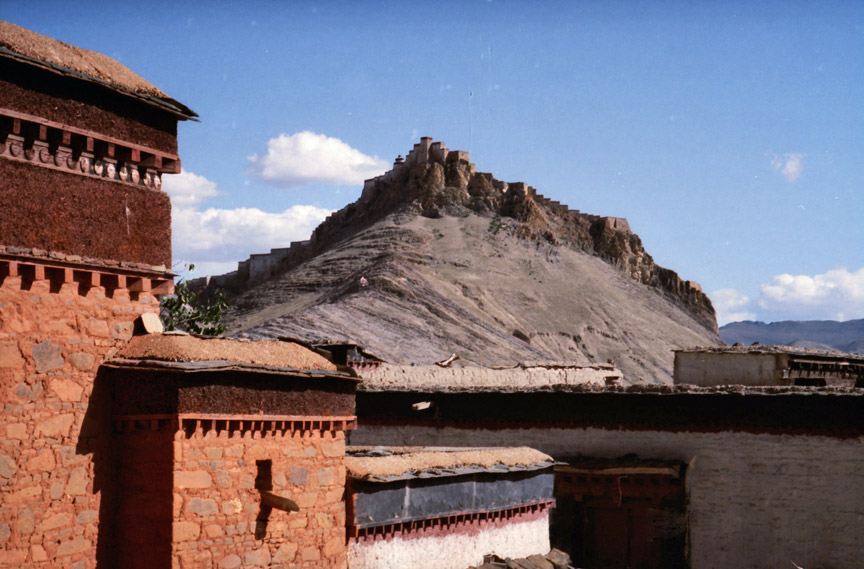
The city is located at an altitude of 3,840 metres (approx. 12,598 feet) at the
confluence of the Yarlung Zangbo (aka Brahmaputra) and Nianchuhe (Nyang Chu)
rivers in west Tibet and was the ancient capital of Ü-Tsang province. It is also
the name of the surrounding county.
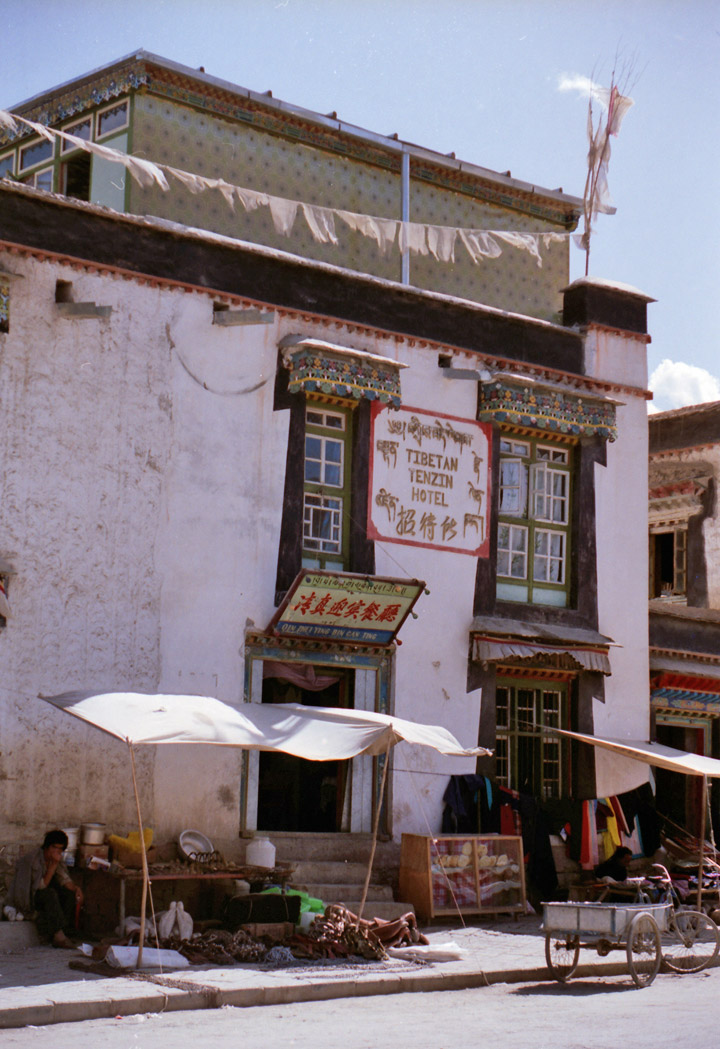
Shigatse was previously known as Samdruptse and the once-imposing Shigatse Dzong,
or fort, (dismantled during the popular uprising of 1959), was the seat of the
kings of Ü-Tsang and the capital of the province of Ü-Tsang or Tsang. In the
19th century the "Tashi" or Panchen Lama had temporal power over Tashilhunpo
Monastery and three small districts, though not over the town of Shigatse
itself, which was administered by two Dzongpön (Prefects) appointed from Lhasa.
There were two Dzongpöns for every Dzong - a lama (Tse-dung) and a layman. They
were entrusted with both civil and military powers and are equal in all
respects, though subordinate to the generals and the Chinese Amban in military
matters.

It contains the huge Tashilhunpo Monastery, founded in 1447 by Gendun Drup, the
First Dalai Lama. It is the traditional seat of the Panchen Lamas. Until the
Chinese arrived in the 1950s, the "Tashi" or Panchen Lama had temporal power
over three small districts, though not over the town of Shigatse itself, which
was administered by a dzongpön (general) appointed from Lhasa.

The imposing castle, Samdrubtse Dzong, originally built in 1363, was destroyed
during the Cultural Revolution. Recently, between 2005 to 2007, the building was
reconstructed, financed by donations from Shanghai. The basis of the
reconstruction were old photos, yet reconstruction was executed in
cement/concrete. Afterwards, the outside was to be wainscotted with natural
stones. The dzong which, in the 17th century, clearly was taken as example when
the Potala palace was constructed in Lhasa, will become a museum on Tibetan
culture.
Text from Wikipedia
